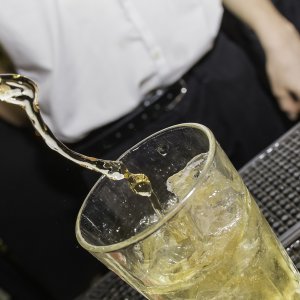Drug Abuse Warning Network Warns About Energy Drinks

High-caffeine energy drinks such as Monster and Red Bull are coming under the magnifying glass of public scrutiny as questions are being raised concerning their safety in the wake of a recent rash of emergency room visits involving people who had been consuming them. The Substance Abuse and Mental Health Services Administration’s Drug Abuse Warning Network (DAWN) released a report earlier this month with the alarming news that the number of emergency room visits related to energy drinks more than doubled from 10,068 in 2007 to 20,783 in 2011.
Although 42 percent of the patients in 2011 had been using the drinks along with alcohol, street drugs or pharmaceutical drugs, 58 percent of them had only been consuming the energy drinks. The DAWN report is not the only recent example of negative attention being focused on the energy drink manufacturers. October 2012 saw a Maryland family sue Monster Beverage Corp. over the death of their 14-year-old daughter whose fatal heart arrhythmia occurred after she drank two cans of the company’s beverage. The Food and Drug Administration received five reports of death following energy drink consumption between 2004 and 2012 and is currently investigating claims of illness and death associated with the drinks.
Energy drinks are advertised for delivering higher levels of alertness and physical and mental performance, weight loss, greater stamina and increased overall energy. They contain large amounts of sugar, B-vitamins, herbs and substances such as taurine, guarana, creatine and gingko biloba. The primary active ingredient, however, is caffeine. The thing that sets them apart from other caffeinated beverages is the simple fact that they contain massive amounts of caffeine, nearly 15 times more than the others. Monster, for example, contains a whopping 475 mg of caffeine, whereas a 12 ounce can of Coca-Cola contains only 35 mg.
An average cup of brewed coffee contains approximately 100 mg of caffeine, while a Grande coffee from Starbucks delivers 330 mg to the customer. Caffeine is a naturally occurring pesticide which certain plants produce as a way to ward off insects. It works by inhibiting the brain’s absorption of adenosine, a chemical which naturally causes tiredness, and in the process, it triggers alertness in the user. The average American adult consumes about 200 mg of caffeine per day, but not in the form of energy drinks which come as a concentrated blast of the drug, along with an onslaught of sugar.
Teens And College Students Abusing Energy Drinks
What is particularly concerning is that the primary market for energy drinks is not adults. Many of the people who consume these drinks are teenagers and young adults, many of whom have not yet learned to exercise moderation. To make the situation worse, these adolescents are typically under considerable pressure to perform in school, which leads to copious consumption of the beverages throughout the week. Not only do they drink the beverages Monday through Friday to make it through the school day and stay up late at night studying, but many of them also drink them on the weekends at parties. Drink combinations such as Red Bull and vodka are common, given the unique interaction between the large amounts of caffeine and alcohol. Caffeine, a stimulant, serves to counteract the effects of alcohol, a depressant.
An individual who mixes the two will often be able to stave off the drowsiness caused by alcohol, which makes it possible to continue drinking far longer than would normally be possible. This greatly increases the risk of alcohol poisoning. The DAWN report also points to connections between college students who consume energy drinks and behaviors such as risky sexual activity, smoking marijuana, fighting and engaging in prescription drug abuse. In addition to the Monster lawsuit and the FDA investigations, the American Academy of Pediatrics has discouraged parents from allowing children of any age to use energy drinks, while the Centers for Disease Control and Prevention has recommended that caffeinated beverages be banned from school vending machines and cafeterias.
Source:


 ®
®